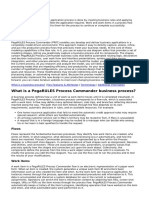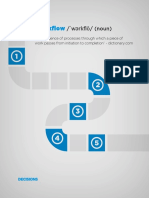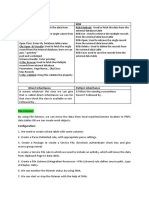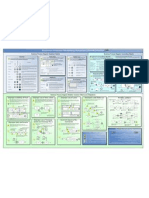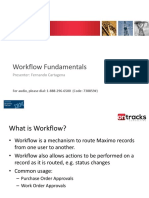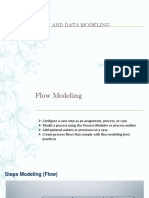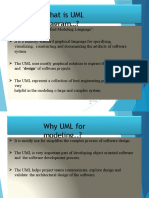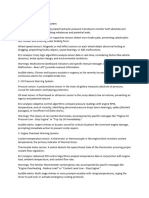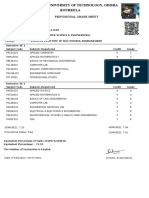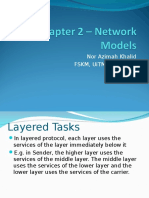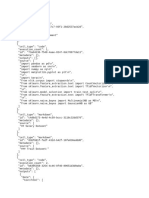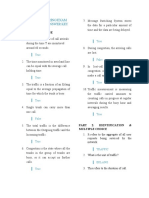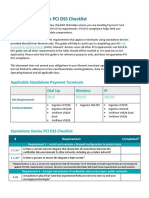0% found this document useful (0 votes)
146 views34 pagesProcess Flow 10 % of EXAM: Material For PRPC Certification
This document discusses key concepts related to process flows in PegaRULES Process Commander (PRPC), including:
1. Process flows represent business processes by identifying who works on work objects, in what sequence work is routed, and what decisions and processing happen automatically. They are defined in Visio using shapes that represent tasks and connectors.
2. Key shapes used in flows include assignments, decisions, forks, and notifies. Subflows can be called from other flows using flow and spin-off shapes.
3. Screen flows present a series of simple forms to users using flow rules. Large flows can be divided into smaller subflows.
4. Worklists, workbaskets, and
Uploaded by
RepalleJayaramCopyright
© © All Rights Reserved
We take content rights seriously. If you suspect this is your content, claim it here.
Available Formats
Download as PPT, PDF, TXT or read online on Scribd
0% found this document useful (0 votes)
146 views34 pagesProcess Flow 10 % of EXAM: Material For PRPC Certification
This document discusses key concepts related to process flows in PegaRULES Process Commander (PRPC), including:
1. Process flows represent business processes by identifying who works on work objects, in what sequence work is routed, and what decisions and processing happen automatically. They are defined in Visio using shapes that represent tasks and connectors.
2. Key shapes used in flows include assignments, decisions, forks, and notifies. Subflows can be called from other flows using flow and spin-off shapes.
3. Screen flows present a series of simple forms to users using flow rules. Large flows can be divided into smaller subflows.
4. Worklists, workbaskets, and
Uploaded by
RepalleJayaramCopyright
© © All Rights Reserved
We take content rights seriously. If you suspect this is your content, claim it here.
Available Formats
Download as PPT, PDF, TXT or read online on Scribd
/ 34






